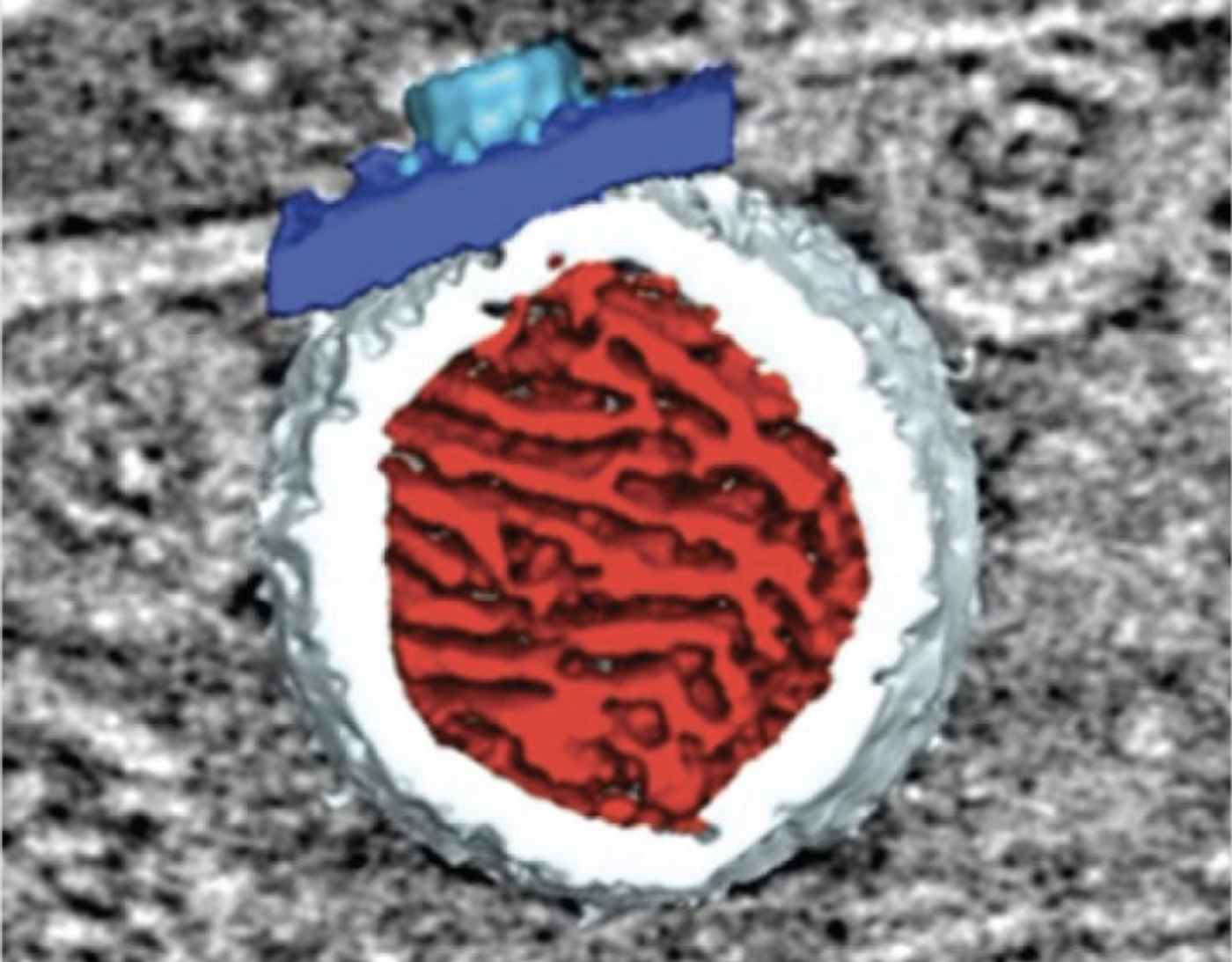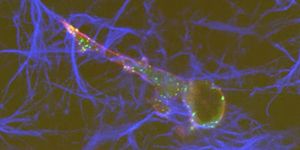Getting a Close Look at Viral Replication
There is still a lot about viruses that we don’t know, and researchers have now taken a major step forward. We are now getting our first look at molecular structures that play a critical role in the replication of viruses within the cells they infect. The work, published in eLife, took advantage of cryo-electron tomography, and can help scientists learn how to disrupt those molecules.
"The challenge is a bit like being a car mechanic and not being able to see the engine or how it's put together in detail," explained Paul Ahlquist, Director of Virology at the Morgridge Institute and a Professor of Oncology and Molecular Virology at the University of Wisconsin-Madison. "This work is our first look at the engine." You can see multiple angles of “a virus RNA replication spherule” in the above video.
Ahlquist’s team is investigating genome replication in the largest genetic class of viruses, positive strand RNA viruses. The lab uses a nodavirus that infects insects as their model, and it has similarities to many viruses that affect humans. Several major human diseases are in the same class, like Zika, Dengue, SARS, and Chikungunya viruses. Their work focuses not on details of each but on the major themes of the group, with an eye on the genome.
"The majority of the virus genome, typically on the order of 75 percent, is given over to genome replication," Ahlquist said. "The virus is telling us - by voting with its most precious resource, its coding capacity - that this is the big job of infection."
The viruses have replication compartments or spherules that contain RNA strands - the viral genetic code - an it is there that replication occurs. The spherules often form on the membranes of infected cells, although the viral model used by the Ahlquist lab does so on the mitochondria of infected cells. The infected mitochondria get filled up and expanded by the spherules.
Positive strand RNA viruses need these replication compartments and as such, they become attractive drug targets, explained Desiree Benefield, a postdoctoral researcher in the Ahlquist Lab at the Morgridge Institute. "With this exciting new structural information we can learn more about how the compartments are formed and function," Benefield said. "This information will contribute to our understanding of viral replication and provide insight on how to control it."
In this study, cryo-ET was utilized, which flash-freezes a sample. That enabled the researchers to get a good look at the true structure, and through tomography they could see it ini three dimensions. "We are able to see structural elements that were previously only inferred from biochemical and genetic experiments, as well as striking new features that were never imagined,” noted Benefield.
"I was first struck by how beautiful and graceful the structures were," Benefield continued. "I was amazed by how efficient the virus is at replicating its RNA and how it completely co-opted the host cell mitochondria to eventually produce more virus. It was a peek behind the curtain of a pathogen at work that was truly humbling."
The positive RNA strand viruses are just one of six different classes of viruses, Ahlquist noted that there are five other classes besides positive RNA strand viruses. Some of the findings from this work could apply to other groups.
"Although these classes have been seen as very different, there are parallels in three of the six classes in terms of genome replication," Ahlquist said. "This has evolutionary implications and allows us to integrate results from different systems to reach unexpected new insights."
Sources: AAAS/Eurekalert! via UW Madison, eLife











